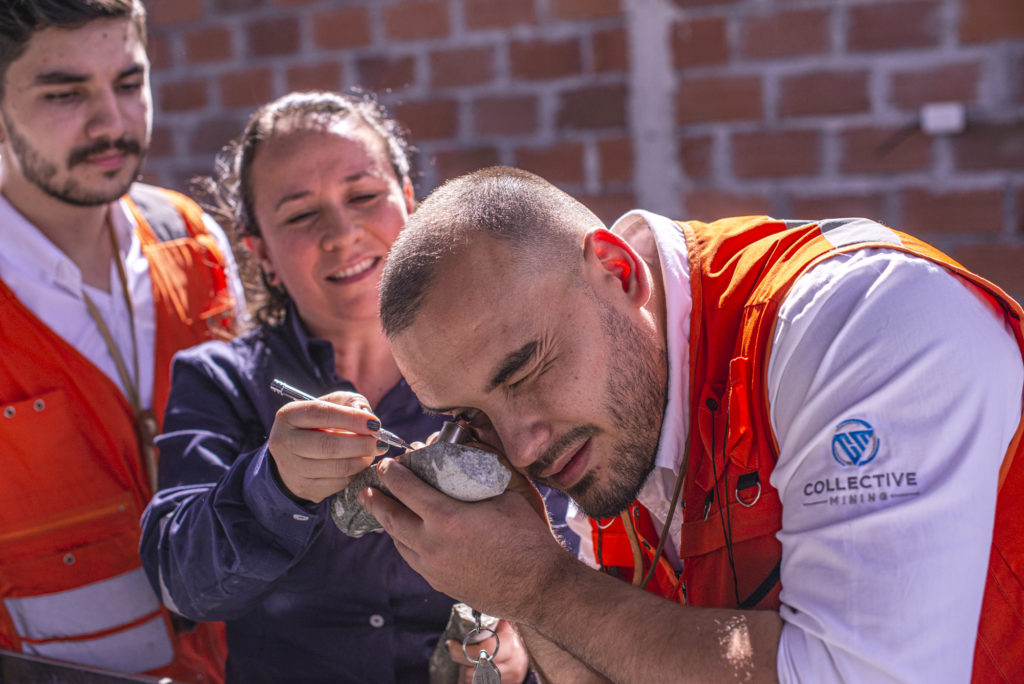
Collective Mining (NYSE: CNL; TSX: CNL) says new drill results connect its Apollo and nearby Olympus deposits at the Guayabales project in Colombia, creating a mineralized system spanning about 1,000 by 800 metres.
The results come from eight diamond drill holes, part of Collective’s ongoing 40,000-metre drilling program using five rigs, the company said Monday. Highlight assay results include 220.6 metres grading 0.89 gram gold per tonne in hole APC98-D1. It included 11 grams silver and 0.04% copper for 1.07 grams gold-equivalent from 145.3 metres depth. The hole also had 32.2 metres grading 1.86 grams gold-equivalent from 195.35 metres.
Canaccord Genuity mining analyst Peter Bell called the Apollo-Olympus connection at the site near Caldas 180 km west from Bogotá a positive development.
“The expanded Apollo system opens up further growth potential,” Bell said in a note to clients Monday. He maintains a speculative buy rating for Collective Mining, with a target price of C$8.75 per share.
Collective shares closed 1.5% stronger on Monday, hitting a new 12-month high at $3.23 in New York. The stock has gain ed 16.5% over the period, giving the company a market capitalization of $220.3 million.
Collective aims to establish Guayabales as a large-scale, high-grade, bulk tonnage gold-silver-copper-tungsten system, with significant resource growth ahead. Development of Guayabales, next to Aris Mining’s (TSX: ARIS; NYSE: ARMN) Marmato mine, taps into growing global demand for high-grade precious metals amid supply constraints and a focus on sustainable, large-scale operations.
“Combining Olympus and Apollo into a larger system is a major milestone,” Ari Sussman, executive chairman of Collective Mining, said in a news release. “This discovery enhances our potential for mineral growth and development. We’ll continue expanding the system northwards and focus on defining higher-grade subzones.”
Some other highlight results included hole APC98-D2. It cut 256.35 metres grading 1.23 grams gold-equivalent (1.03 gold per tonne, 13 grams silver and 0.03% copper) from 30.6 metres, including 7.9 metres grading 1.8 grams gold-equivalent from 117.1 metres, and 11.9 metres grading 3.11 grams gold-equivalent from 163 metres.
Hole PZC-3 returned 50.1 metres grading 1.2 grams gold-equivalent (0.83 grams gold, 22 grams silver and 0.1% copper) from 95.95 metres, including 11.05 metres grading 2.06 grams per tonne gold-equivalent from 95.95 metres.
The updated Apollo model spans up to 600 metres of strike by 395 metres of width by 1,130 metres vertically. The system remains open for expansion, with mineralization starting at the surface and extending to over 1,100 metres deep.
Drilling continues, focusing on the Apollo, Box, Olympus, and Trap targets. The company’s 2024 objective is to expand the Apollo system, step out along strike to expand the recently discovered Trap system and make a new discovery at either the Tower, X or Plutus targets.